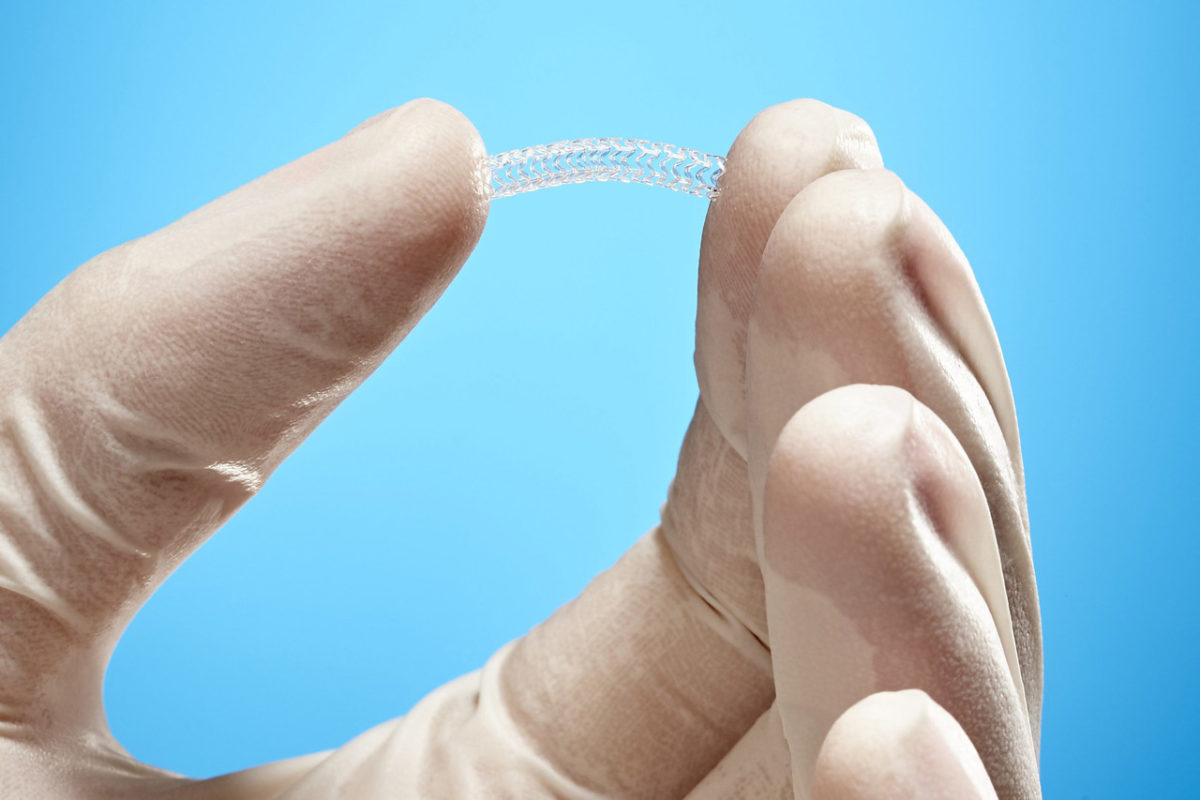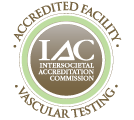TVE Aesthetics’, previously known as International Vein Clinics, Nicole L. Mills, DNP, APRN, FNP-C recently completed a case study on the Cutera Excel V Laser. Her goal was to observe the effectiveness of the Excel V Laser as a treatment of superficial and deep vascular lesions of the face and legs. Nicole performed three laser treatments on a patient’s facial veins. The results were remarkable. You can review the case study, and view the amazing photos, at the link below.
LONG-TERM CLINICAL OUTCOMES AND TECHNICAL FACTORS WITH THE WALLSTENT FOR TREATMENT OF CHRONIC ILIOFEMORAL VENOUS OBSTRUCTION
CHICAGO, Illinois – January 2019 – A single-center experience using the Wallstent for iliofemoral venous obstruction reveals excellent outcomes.
Placement of large diameter stents has become the mainstay treatment of symptomatic iliofemoral venous occlusion. However, factors affecting the clinical outcome and durable stent patency remain incompletely understood.
Perhaps the most common and time-honored stent to be used in such a scenario is the Wallstent (Boston Scientific). Although initially created to treat biliary tract obstruction, this device has been used extensively in the endovascular treatment of venous occlusive diseases because of its large diameter.
While the use of the Wallstent in venous disease has been widespread, shortcomings such as less radial force at the ends and significant shortening remain issues in its deployment. As such, long-term assessment of its usage is now appropriate given first generation, dedicated venous stents are currently in clinical trial.
As reported in the January edition of the Journal of Vascular Surgery: Venous and Lymphatic Disorders, researchers from The Vascular Experts in Darien, Connecticut, led by vascular surgeon Paul Gagne, MD, have performed a retrospective review of their experience with the Wallstent to treat iliofemoral venous obstruction. Herein they present their results of 77 limbs in 67 consecutive patients treated from 2007-2014.
Their series of patients were characterized as:
- 55% male,
- Median age 63 (range 47-83 years),
- 62% left-sided, with a
- Median baseline Venous Clinical Severity Score (VCSS) score of 9 (3-23).
The deployed Wallstents ranged in:
- Diameter from 10-22mm, and
- Length from 40-90mm, with
- 82% being 14-18mm in diameter.
Additionally, 22% of stents were deployed into the common femoral vein while 8% involved the inferior vena cava.
With regards to patency, at 72 months, those treated for:
- Non-thrombotic disease had a:
- Primary patency 97%
- Primary assisted patency 100%
- Secondary patency 100%, while those treated for:
- Thrombotic disease had had a:
- Primary patency 75%
- Primary assisted patency 88%
- Secondary patency 88%.
At a median follow up of 26 months, 68% of patients showed a >4 point VCSS improvement, with none with worse symptoms.
Multivariate regression analysis revealed that only common femoral vein involvement predicted loss of primary patency (4.4 times more likely). Post-thrombotic lesions had loss of primary patency 6.9 times more likely, but this did not reach statistical significance (P value of 0.07).
“Our experience found that stenting of chronic iliofemoral venous obstruction resulted in excellent long-term patency rates and significant clinical improvement for a majority of patients. Although the Wallstent presents certain technical challenges, we have optimized our technique to work through these challenges to achieve good result,” notes Dr. Gagne.
He further states that, “The analysis of most and least improved limbs found that improved outcomes were observed in patients who presented with more severe venous disease. The most improved subset was disproportionally composed of C6 patients with open ulcers, whereas one-third of the C3 patients treated in the overall series were among the least improved.”
Until randomized clinical trials confirm better efficacy for dedicated venous stents than conservative management, this important well documented series brings additional evidence to the long-term patency and clinical improvement afforded patients following use of the Wallstent for iliofemoral venous obstruction.
The approval of a new absorbable heart stent offers increased options for treating arterial blockage. The anticipated long term benefits, which have not been proven yet, include shortening the time patients must take blood thinners, simplifying future diagnosis, avoiding new disease forming in metal devices, and avoiding the need for future procedures.
A study conducted by the Charité – Universitätsmedizin Berlin, one of the largest university hospitals in Europe, found that a history of migraine in women is associated with increased risk of major cardiovascular disease. The study showed that women with migraine had a increased risk of myocardial infarction (39%), stroke (62%), and death due to cardiovascular disease (37%).
Every patient with Peripheral Artery Disease is unique but many are on statins. If you or a loved one is on statins and may have PAD, you’ll be interested in an article appearing in last Friday’s Medical News Today. It points to the connection between PAD patients on statins and reduced risk of amputation and death.
In 2010, at age 26, NASCAR driver Brian Vickers was on a trip to Washington DC when he began to experience chest pain. At the time, Vickers was on a meteoric rise as one of the premier drivers in NASCAR. But a condition known as May-Thurner Syndrome was about to put Vickers’ career on hold.
When I was asked to write a blog post about vascular surgery, I had to ask myself: what is it that people want to read about? Perhaps I would ask patients what they are interesting in knowing more about.
One of the most common vascular issues treated by Vascular Surgeons is diabetic foot ulcers (DFUs). Up to 25% of diabetic patients will have a foot ulcer during their lifetime. Diabetic foot ulcers are wounds of the lower extremities that develop because of poor blood circulation.
My Grandmother was an amazing woman. Born and raised in southern Rhode Island she was the classic example of New England grit and vigor.
We live in Connecticut where there is an abundance of natural parks and endless opportunities to engage in recreation. With summer upon us, what better time is there to get outside and enjoy some of the natural beauty Connecticut has to offer?




